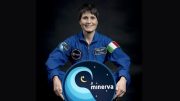From 20 to 22 January, the second edition of the symposium on space addressing water challenges is being organized by the French hydrotechnical society SHF and CNES, in partnership with Artelia. This event falls within the scope of the SWOT Downstream preparatory programme that France is helping to fund through its PIA future investment plan. In his address opening the symposium, CNES President Jean-Yves Le Gall underlined how space technologies are being employed to monitor and manage water resources that are a common good of humanity. That is why sustainable management of water resources and their quality, and global change coping strategies are central to the 17 Sustainable Development Goals for 2030 adopted by UN member nations and to the Paris Agreement signed in 2015.
CNES is involved in a number of very ambitious future space missions aiming to enhance our ability through Earth remote sensing to monitor each of the main components of the water cycle. These include the TRISHNA mission focused on evaporation, SWOT and SMASH concentrating on discharges, soil moisture with the follow-on to SMOS to extend its 11-year data record, water stocks with MARVEL and very-highresolution digital surface models with CO3D.
The crucial French-US SWOT (Surface Water and Ocean Topography) mission set to launch in 2022 is the first dedicated specifically to monitoring surface water levels with such unprecedented precision. CNES, in partnership with laboratories, research centres, industry and in particular SMEs/SMIs, has therefore established a SWOT Downstream preparatory programme focused on space hydrology, federating the science and user communities to address common challenges. Among the programme’s many initiatives, closely supported by the THEIA land surfaces data centre, are monitoring of water levels by satellite altimetry at more than 11,000 points around the globe and tracking of snow pack, both of which are part of the Copernicus Land Monitoring service. Other initiatives will be coming on stream between now and 2022 to provide operational monitoring of surface water extent, variations in reservoir water volume and water quality. All of these multi-mission, multi-source data will be freely accessible through the central HydrowebNG water platform.
CNES’s ambition is to apply this same model to other space missions like TRISHNA and CO3D and foster closer connections between space infrastructures and applications. It is also in this spirit that CNES initiated the Space Climate Observatory (SCO) created at the One Planet Summit in 2017. Through the SCO, satellite data are freely available without charge and without time limit to monitor the impacts of climate change.
Source : CNES








Be the first to comment on "Space helping to adress water challenges"